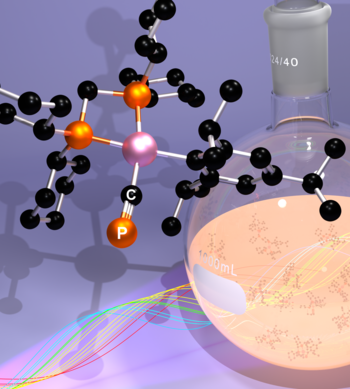New publication on preparing stable, yet reactive cyaphido complexes in the Journal of the American Chemical Society
News vom 10.11.2021
Aufbauend auf den Arbeiten von W. D. Jones gelang uns die photochemische Aktivierung von an Pt(0) koordinierten Phosphaalkinen und die Darstellung von stabilen und dennoch reaktiven Cyaphido-Komplexen, welche mittels [3+2] Cycloaddition mit organischen Aziden zu Pt(II)-Triazaphosphol-Komplexen umgesetzt werden konnten. Diese sind derzeitig einzigartig bezüglich ihrer Koordination – Bindung des formal anionischen Triazaphospholids über das Kohlenstoff-Atom an das Platin(II)-Metallzentrum. Die ausführlichen Ergebnisse wurden kürzlich im Journal of the American Chemical Society (https://doi.org/10.1021/jacs.1c07370) veröffentlicht. Gratulation an die beteiligten Autoren und einen herzlichen Dank an alle Kooperationspartner, insbesondere hinsichtlich der Anwendung einer neuartigen Röntgenstrukturanalysetechnik (B. Dittrich, P. Müller).
Based on the work of W. D. Jones, we succeeded in activating photochemically platinum-coordinated phosphaalkynes and preparing stable yet reactive cyaphido complexes, which could be converted to Pt(II) triazaphospholide complexes by [3+2] cycloaddition with organic azides. These are currently unique with respect to their coordination - bonding of the triazaphosphole via the carbon atom to the platinum(II) metal center. The detailed results were recently published in the Journal of the American Chemical Society (https://doi.org/10.1021/jacs.1c07370). Congratulations to the authors involved and sincere thanks to all collaborators especially with respect to the application of a novel X-ray structure analysis technique (B. Dittrich, P. Müller).

